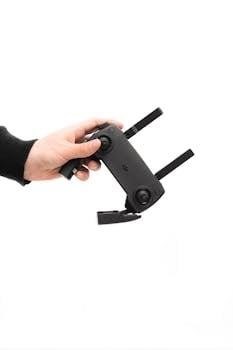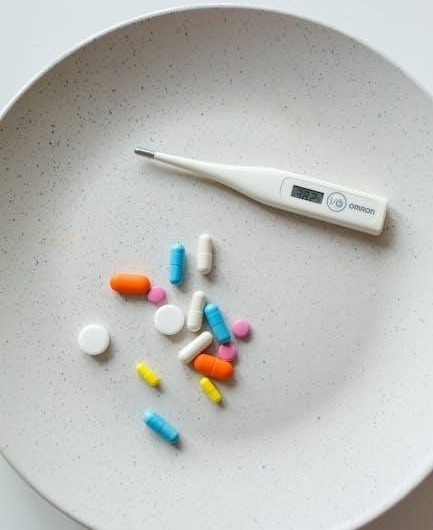
LIFEPAK 15 User Manual⁚ A Comprehensive Guide
Welcome to the comprehensive guide to the LIFEPAK 15 monitor/defibrillator! This resource provides essential information on its features, operation, maintenance, and troubleshooting. Whether you’re a seasoned professional or new user, this guide ensures optimal device utilization for emergency cardiac care. Learn to maximize its potential!
The LIFEPAK 15 monitor/defibrillator stands as a cornerstone in acute cardiac care, offering a comprehensive solution for Basic Life Support (BLS) and Advanced Life Support (ALS) patient management. Designed for emergency medical services, it integrates monitoring, defibrillation, and advanced therapeutic capabilities into a single, robust device. This user manual serves as your guide to unlocking the full potential of the LIFEPAK 15, ensuring you are well-equipped to handle critical situations.
Within these pages, you will discover detailed instructions on device operation, safety protocols, and maintenance procedures. From understanding the various modes of operation, including manual defibrillation and AED mode, to mastering the monitoring capabilities for ECG, blood pressure, and SpO2, this manual provides the knowledge necessary for effective patient care. Furthermore, it covers essential aspects of data management and connectivity, enabling seamless transmission of patient records and reports.
Whether you are a seasoned healthcare professional or new to the LIFEPAK 15, this comprehensive guide will empower you to confidently and competently utilize this life-saving device.
Intended Use and Modes of Operation
The LIFEPAK 15 is specifically designed for use by trained medical personnel, including paramedics, nurses, and physicians, in both pre-hospital and hospital settings. Its primary intended use is to monitor a patient’s physiological parameters, deliver therapeutic interventions such as defibrillation and pacing, and provide guidance during cardiopulmonary resuscitation (CPR).
The device operates in several key modes⁚
- Manual Defibrillation⁚ Allows trained users to interpret ECG rhythms and deliver a controlled electrical shock.
- Automated External Defibrillation (AED) Mode⁚ Provides voice prompts and automated analysis to guide users through the defibrillation process.
- Pacing⁚ Delivers controlled electrical impulses to stimulate the heart when natural pacing is ineffective.
- Monitoring⁚ Continuously tracks vital signs, including ECG, heart rate, blood pressure, SpO2, and EtCO2.
- CPR Metronome⁚ Guides rescuers with auditory and visual prompts to maintain proper CPR compression rate and depth.
Understanding each mode is crucial for effective and safe operation, ensuring the best possible outcome for patients in critical situations.
Safety Information and Warnings
Operating the LIFEPAK 15 requires strict adherence to safety guidelines to prevent injury to both the patient and the operator. Always ensure proper training and familiarity with the device before use. Key safety precautions include⁚
- Electrical Safety⁚ Never touch the patient during defibrillation. Ensure proper grounding and inspect cables for damage.
- Electrode Placement⁚ Use appropriate electrode placement techniques to avoid skin burns or ineffective therapy.
- Oxygen Environment⁚ Avoid using the defibrillator in oxygen-rich environments due to the risk of fire.
- Device Inspection⁚ Regularly inspect the device for any signs of damage or malfunction.
- Battery Management⁚ Use only approved batteries and ensure they are properly charged.
- Data Security⁚ Protect patient data by following established security protocols when transmitting or storing information.
Ignoring safety warnings can lead to serious consequences. Always consult the complete user manual for a comprehensive list of safety precautions and warnings before operating the LIFEPAK 15. Prioritize safety to ensure the well-being of everyone involved.

Operating the LIFEPAK 15
This section details the operational procedures for the LIFEPAK 15. Learn about manual defibrillation, AED mode, CPR guidance, and monitoring capabilities. Proper operation ensures effective patient care and optimal device performance in critical situations.
Manual Defibrillation
Manual defibrillation with the LIFEPAK 15 provides advanced users direct control over energy delivery. Before initiating, confirm the patient’s condition warrants defibrillation, ensuring absence of pulse and signs of life. Select appropriate energy levels based on established protocols and patient size, typically starting with lower doses and escalating if necessary. Apply conductive gel to defibrillation paddles or utilize hands-free electrodes for effective energy transfer.
Position paddles firmly on the chest, ensuring proper placement—sternum-apex or anterior-posterior—to optimize current flow through the heart. Announce “Clear!” to ensure all personnel are safely away from the patient and equipment before discharging the electrical shock. Observe the ECG rhythm post-shock; if ventricular fibrillation persists, repeat defibrillation at increasing energy levels as per guidelines. Continuously monitor the patient’s condition and adjust treatment strategies accordingly.
Remember to consult the complete LIFEPAK 15 operating manual for detailed instructions, safety precautions, and specific protocols related to manual defibrillation. This ensures safe and effective use in emergency situations. Prioritize patient safety and adhere to established medical guidelines at all times.
Automated External Defibrillation (AED) Mode
The LIFEPAK 15’s AED mode simplifies defibrillation for users with varying levels of expertise. Upon activation, the device guides the operator through each step with clear voice prompts and visual cues. Begin by attaching AED pads to the patient’s chest, following the illustrated diagrams on the pads themselves. The LIFEPAK 15 automatically analyzes the patient’s heart rhythm to determine if a shock is advisable.
If a shockable rhythm is detected, the device prompts the user to ensure everyone is clear of the patient before delivering the electrical impulse. Press the SHOCK button when instructed. If no shock is advised, the LIFEPAK 15 will guide the operator to begin or continue CPR. The device re-analyzes the heart rhythm at set intervals, prompting further action as needed.
AED mode serves as a crucial tool for rapid response in cardiac arrest situations. However, familiarity with the device and adherence to prompts are essential for effective use; Remember to consult the full LIFEPAK 15 manual for in-depth information and safety guidelines. Continuous training and practice are vital for confident operation.
CPR Metronome and Ventilation Guidance
The LIFEPAK 15 incorporates a CPR metronome to assist rescuers in maintaining the recommended chest compression rate during cardiopulmonary resuscitation. This feature emits an audible beep at the AHA-recommended rate of 100-120 compressions per minute, helping to ensure consistent and effective compressions. To activate the metronome, navigate to the CPR settings on the device’s display screen and select the metronome function.
Furthermore, the LIFEPAK 15 offers ventilation guidance to optimize breathing support. The device may provide prompts related to ventilation rate and volume, helping to avoid hyperventilation or hypoventilation. Proper ventilation is crucial for oxygenating the patient and removing carbon dioxide. However, always prioritize chest compressions and minimize interruptions during CPR. The ventilation guidance should be used in conjunction with established CPR protocols and professional judgment.
The CPR metronome and ventilation guidance features serve as valuable tools for enhancing the quality of CPR. While these features offer assistance, they should not replace proper training and adherence to established guidelines. Regular CPR practice is essential for maintaining proficiency and ensuring optimal patient outcomes.
Monitoring Capabilities (ECG, Blood Pressure, SpO2)
The LIFEPAK 15 boasts comprehensive monitoring capabilities, providing essential physiological data for informed clinical decision-making. It offers continuous ECG monitoring, displaying real-time cardiac rhythms to detect arrhythmias and assess the patient’s heart condition; The device supports various lead configurations for detailed ECG analysis. Ensure proper electrode placement for accurate readings.
Non-invasive blood pressure (NIBP) monitoring is integrated, automatically measuring systolic, diastolic, and mean arterial pressures, along with pulse rate. Measurements can be initiated manually or set for automatic intervals. Be mindful of cuff size and placement to ensure accurate NIBP readings.
SpO2 monitoring allows for continuous assessment of the patient’s oxygen saturation levels. The device uses a pulse oximeter sensor to measure the percentage of oxygen in the blood. Proper sensor placement and consideration of factors like peripheral perfusion are important for reliable SpO2 readings. The LIFEPAK 15’s monitoring features enable clinicians to track vital signs, assess patient status, and guide appropriate interventions.

Maintenance and Troubleshooting
Ensuring the LIFEPAK 15’s readiness requires consistent maintenance. This section details daily checks, printer care, and troubleshooting common issues. Properly maintaining your device ensures reliable performance and optimal patient outcomes in critical situations. Refer to the operator’s checklist.
Daily Checks and Operator’s Checklist
The LIFEPAK 15’s reliability hinges on diligent daily checks. Begin each shift by verifying the device’s operational status using the operator’s checklist. This includes confirming battery charge, cable integrity, and display functionality. Examine the printer for adequate paper and perform a test print to ensure clarity.
Check therapy cables for damage, replacing if necessary. Inspect the SpO2 sensor, NIBP cuff, and ECG leads for proper function and cleanliness. Confirm the presence and expiration dates of electrodes and gel. Ensure all accessories are readily available and in good working order.
Verify the device software is up-to-date. Document all checks meticulously, noting any discrepancies or malfunctions. Report any issues to the appropriate personnel for prompt resolution. Consistent adherence to the checklist guarantees preparedness. Proper execution of these checks dramatically reduces the risk of device failure during critical patient care scenarios.
Loading Paper and Printer Maintenance
Maintaining the LIFEPAK 15’s printer is crucial for generating essential reports and ECG strips. Regular paper loading and printer maintenance ensure clear, legible printouts, facilitating accurate record-keeping and data analysis.
To load paper, first open the printer cover. Insert a new roll of thermal paper, ensuring it’s oriented correctly. The paper should feed smoothly from the roll. Close the printer cover securely. Perform a test print to verify proper loading and print quality.
For printer maintenance, regularly clean the print head using a specialized cleaning card or a lint-free cloth dampened with isopropyl alcohol. Gently wipe the print head to remove any debris or residue. Avoid using excessive force, as this could damage the print head.
If printouts appear faded or unclear, check the printer settings and adjust the print density if necessary. Replace the printer head if cleaning doesn’t resolve the issue. Always use recommended thermal paper to prevent damage and ensure optimal print quality. Document all maintenance activities.
Troubleshooting Common Issues
Addressing common issues promptly ensures the LIFEPAK 15 functions optimally during critical situations. If the device fails to power on, first verify the battery is adequately charged and properly connected. If the problem persists, try using an external power source.
For ECG monitoring issues, ensure the electrodes are correctly placed and have good skin contact. Replace expired electrodes. Check the lead cable for damage. If the ECG signal is noisy, minimize electrical interference from other devices.
If defibrillation fails to deliver a shock, confirm the paddles or pads are firmly applied to the patient’s chest. Verify the selected energy level is appropriate. Check the device for error messages and consult the user manual for troubleshooting steps.
Printer malfunctions can often be resolved by checking the paper supply and cleaning the print head. If Bluetooth connectivity issues arise, ensure the device is paired correctly with the receiving device. Restarting the LIFEPAK 15 can also resolve temporary software glitches.

Data Management and Connectivity
Effectively manage patient data with the LIFEPAK 15’s robust connectivity features. Transmit records wirelessly via Bluetooth for seamless integration with data management systems, ensuring timely access to critical information and improved patient care coordination.
Transmitting Patient Records and Reports
The LIFEPAK 15 facilitates efficient transfer of patient data, ensuring seamless communication between healthcare providers. This feature allows for transmitting comprehensive records and reports, enhancing continuity of care and enabling informed decision-making. Before transmitting, ensure the monitor is prepared, verifying data integrity and security protocols.
Patient records can be transmitted wirelessly, streamlining the process and minimizing delays. The device supports secure data transfer, safeguarding patient confidentiality in compliance with regulatory standards. Transmitted data includes ECG waveforms, vital signs, therapy delivery details, and event logs.
This comprehensive reporting capability allows for detailed analysis of patient encounters, supporting quality improvement initiatives and research endeavors. The LIFEPAK 15 enables healthcare professionals to efficiently document and share critical information, ultimately improving patient outcomes. Proper data management is crucial for effective emergency response and ongoing patient care. By utilizing these capabilities, clinicians can optimize workflow and enhance collaboration.
Bluetooth Wireless Communication
The LIFEPAK 15 features Bluetooth wireless communication, enabling seamless connectivity with compatible devices. This capability facilitates efficient data transfer and enhanced workflow management. Utilizing Bluetooth, the LIFEPAK 15 can wirelessly transmit patient data to external systems, streamlining documentation and analysis.

Bluetooth connectivity ensures secure and reliable communication, adhering to industry standards for data privacy and security. Pairing the LIFEPAK 15 with other devices is straightforward, allowing for quick setup and immediate use. Wireless transmission eliminates the need for physical cables, reducing clutter and improving portability.
This feature supports real-time data sharing, enabling remote monitoring and consultation. Bluetooth communication enhances collaboration among healthcare professionals, improving patient care coordination. Additionally, the LIFEPAK 15 can receive software updates wirelessly via Bluetooth, ensuring the device remains up-to-date with the latest features and security enhancements. Proper configuration and maintenance of Bluetooth settings are essential for optimal performance and security.
 scag freedom z owners manual
scag freedom z owners manual  zoom h1 owners manual
zoom h1 owners manual  nuwave oven pro plus manual
nuwave oven pro plus manual  nuna pipa urbn manual
nuna pipa urbn manual  hobart tigwave 250 ac dc manual
hobart tigwave 250 ac dc manual  valentía 2 libro pdf descargar gratis
valentía 2 libro pdf descargar gratis  instructions for mobi thermometer
instructions for mobi thermometer  guiding light alan spaulding
guiding light alan spaulding